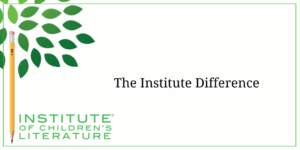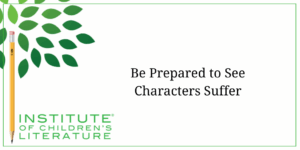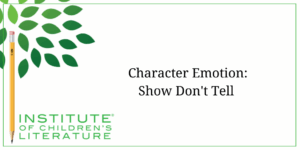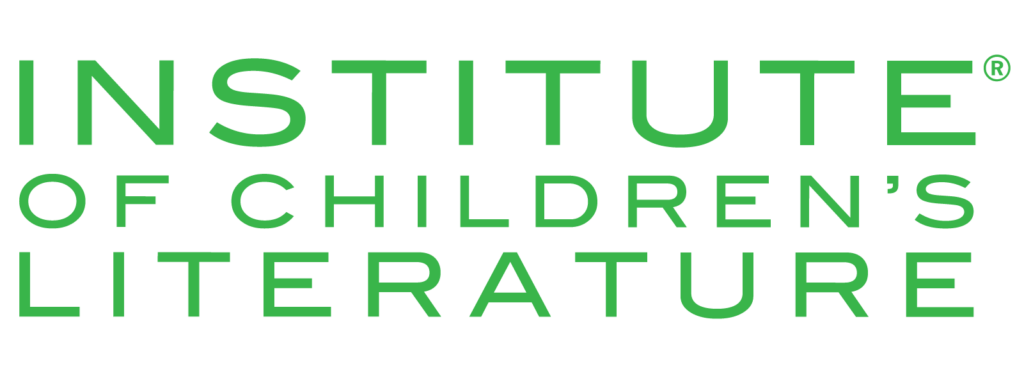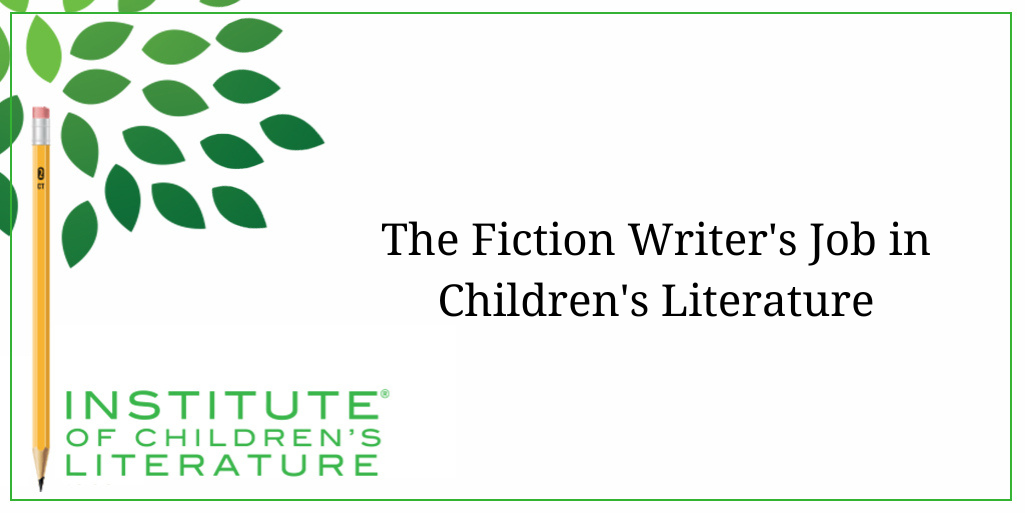
- Date: February 13, 2025
- Author: Jan Fields
- Category: Writing for Children Blog
- Tags: children's literature, kidlit, Picture Books
We teach our students how to write and get published!
View our Course Catalog >
The Fiction Writer's Job in Children's Literature
Children’s literature hasn’t always been like it is today. Not only has the industry changed but the approach to why we need children's books at all has changed. Mostly, the first children's literature published in the United States had two very specific goals. They helped children read through progressive learning, and they taught children morals. So, children's stories sometimes included some fairly gruesome endings for naughty children. And “good children” tended to be very, very pious and unrealistic in these stories.
It's important to note that illustrating the ill effects of bad behavior isn't restricted to children's literature, they've been a vital part of folk tales all over the world, tales that were shared orally with both children and adults. They were a way of reinforcing societal expectations to all ages. And they were popular. Even today, we tend to like stories where the good guys win, which is a bit of a morality tale itself. Still, all of this brings up to the question: what is your writing meant to do? 
Entertain
The primary goal of children's literature is the same as the primary goal of an adult story. It is meant to entertain. This is also true in children's nonfiction, by the way. Most educational nonfiction is “high interest,” which is code for nonfiction meant to entertain as much as inform. So, books and short stories and articles for children need to entertain. Many beginning authors get caught up in other goals for a story and forget that it needs to entertain as much as any other purpose. People writing modern morality tales of Whiny Wanda who learns to behave have forgotten that kids aren't likely to read about Wanda because they aren't likely to find her entertaining. Unless, of course, you make the story of her learning to behave wild and wacky and hilariously funny. Humor is entertaining and can let you get away with elements of a story that wouldn't otherwise be a child's favorite. Humor can be the spoonful of sugar to make the medicine of other goals go down.
But not every writer is funny, nor is every book. So, what other sorts of things are entertaining? Adventure is entertaining. And by adventure, I mean stories of peril that actually grip the reader and make them wonder exactly how this is all going to turn out. Adventure moves fast and keeps the reader on the edge of their seat. And that's entertaining. Being scared in a completely safe setting can be entertaining. Drama is entertaining. YA readers especially like a bit of drama between characters. That is the age where books can slip in a little bit of soap opera drama about mean girls or social conflict. In the same young adult group, a bit of romance can be entertaining especially since we know the course of true love is very, very bumpy.
If you have other things you want to do with your story, such as help the reader explore some social/emotional learning topics, entertainment is a good way to keep them glued to the page until it gets a chance to touch their hearts. So whatever other goals you have, entertainment has to be first. Without it, you lose the reader. They won't be on your side, and they may not ever finish the story. Lessons shoved at anyone tend to be batted aside. That's why we use entertainment as the vehicle for any theme we want to explore or any information we want to impart.
Spread Hope
 There was a time when even stories for adults tended to reward the good guys and punish the evil doers. Horror novels and horror movies were mostly about the good guys taking a bit of a beating but figuring out how to work together to overcome the monster. All of this is about hope. When we see good defeat evil over and over in our entertainment, we get hope along for the ride. We begin to believe that things can be okay eventually.
There was a time when even stories for adults tended to reward the good guys and punish the evil doers. Horror novels and horror movies were mostly about the good guys taking a bit of a beating but figuring out how to work together to overcome the monster. All of this is about hope. When we see good defeat evil over and over in our entertainment, we get hope along for the ride. We begin to believe that things can be okay eventually.
Much of modern literature, especially literary novels, can be pretty dark and hopeless. And we can no longer count on the good guys defeating the monsters in horror novels (in fact, it's almost rare in horror movies to get a good conquers evil story). But for all that, children's literature hasn't given up hope as a vital ingredient in story. We instinctively recognize the importance of giving children hope. Especially children in difficult or painful situations. That doesn't mean we have to make the story challenges easy. It doesn't even mean the hero emerges unscathed. Heroes suffer lose and get battered, but they aren't defeated completely. And in that lies hope. It acknowledges that things can get really, really rough, but that you can emerge from that and see change for the better.
Incite Change
Hope is about change. Whatever is bad right now can change. But there is something even more valuable than the promise that things can change. This is the belief that you can help change them. Young readers want to see characters who aren't simply bobbing along on the current, hoping it takes them someplace better. They want to see characters actively working to produce change. Now big changes may be beyond the capacity of one person, but big changes can happen if everyone does a little bit. And that can be for good or bad. If everyone pitches just one bit of trash out a car window, you get a lot of trash on the ground. Pointing that out also teaches about the power of change. Change and the role of the individual in it is a powerful part of children's literature.
This is one of the reasons writing instructors will tell you over and over to be sure the ending of your story happens as a direct result of the behavior and decisions of your main character. Your main character needs to matter. Each person matters to the success of a community, a society, a family, so we want our stories to reflect that. Sure, young children have limited power in their lives, but even very young children can affect change. If you doubt that, take a moment to read Knuffle Bunny, a perfect example of how even children at their most powerless age can affect the change that needs to happen for a happy ending. A story where the main character matters is an encouraging story for readers. 
Lighten the Load
The myth of the “carefree childhood” is a comfortable one for adults to carry around. It means you don't have to worry too much about the kids. But the fact is that childhood is often far from carefree. Children are aware of the stress and burdens their parents carry. They may not completely understand the load, but they feel the weight. They are also bombarded with messages about the world around them, and many of these messages can be doom loaded. They can worry about things about themselves as well. If they are different, they can feel very alone with the weight of that difference. Human society tends to be uncomfortable with people who are different, and kids can feel that. It can manifest as bullying, but it can also manifest as simple isolation and exclusion. All of this comes together to create a heavy burden for kids to carry.
Part of the job of books is to lighten the load. Today you hear more and more about books that cover the full scope of lived experience. The days when virtually all children's books were either about comfortable middle-class, white families, or hard-working rural white families are ending. Those books still exist but they share the shelf with the rest of the world. New books reflect the complex lives children live. More and more people understand the incredible power of simply seeing your own experience reflected in books. The simple existence of books that reflect more of the world helps to lighten the load for so many children. When they see children like themselves on the pages of books they read, they feel less alone, less unacceptable.
Teach
Finally, there is room for teaching in children’s literature. You'll see submissions guidelines stressing that they aren't looking for books that moralize or preach, but that doesn't mean that fiction books can't teach. There books can absolutely teach, but often that's not the first thing the writer needs to be doing. It can't be the focal point of the writer's job, or else all the other parts of the storytelling will suffer.
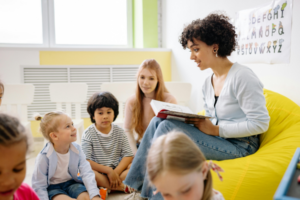 When Gertie in Lu Fraser's The Littlest Yak learns that sometimes the thing you like best about yourself can be something that saves the day, the reader learns that too. When the cat and the human learn to appreciate each other's differences in Sara Lundberg's The Cat Way, the reader learns the value of that as well. And when the kids in Built to Last by Minh Le and Dan Santat learn about friendship and challenge, the reader learns that too. That's because each of these creators first help the reader connect with and care about the characters, then when the characters are on their paths of discovery, the reader is coming along to learn as well. But the first thing cannot be the lesson. The first things must be the story, the characters, the connection and the pleasure of a tale well told. When you have those things, readers learn and grow right alone with the characters.
When Gertie in Lu Fraser's The Littlest Yak learns that sometimes the thing you like best about yourself can be something that saves the day, the reader learns that too. When the cat and the human learn to appreciate each other's differences in Sara Lundberg's The Cat Way, the reader learns the value of that as well. And when the kids in Built to Last by Minh Le and Dan Santat learn about friendship and challenge, the reader learns that too. That's because each of these creators first help the reader connect with and care about the characters, then when the characters are on their paths of discovery, the reader is coming along to learn as well. But the first thing cannot be the lesson. The first things must be the story, the characters, the connection and the pleasure of a tale well told. When you have those things, readers learn and grow right alone with the characters.
What's a fiction writer's job? The job is simple: create a story where connection and discovery is possible for the reader. Simple, right? But it is so challenging. Still, once you do that, there is no place you cannot go. Enjoy the journey. I know your readers will.
Related Articles for Writing Children's Literature
With over 100 books in publication, Jan Fields writes both chapter books for children and mystery novels for adults. She’s also known for a variety of experiences teaching writing, from one session SCBWI events to lengthier Highlights Foundation workshops to these blog posts for the Institute of Children’s Literature. As a former ICL instructor, Jan enjoys equipping writers for success in whatever way she can.

